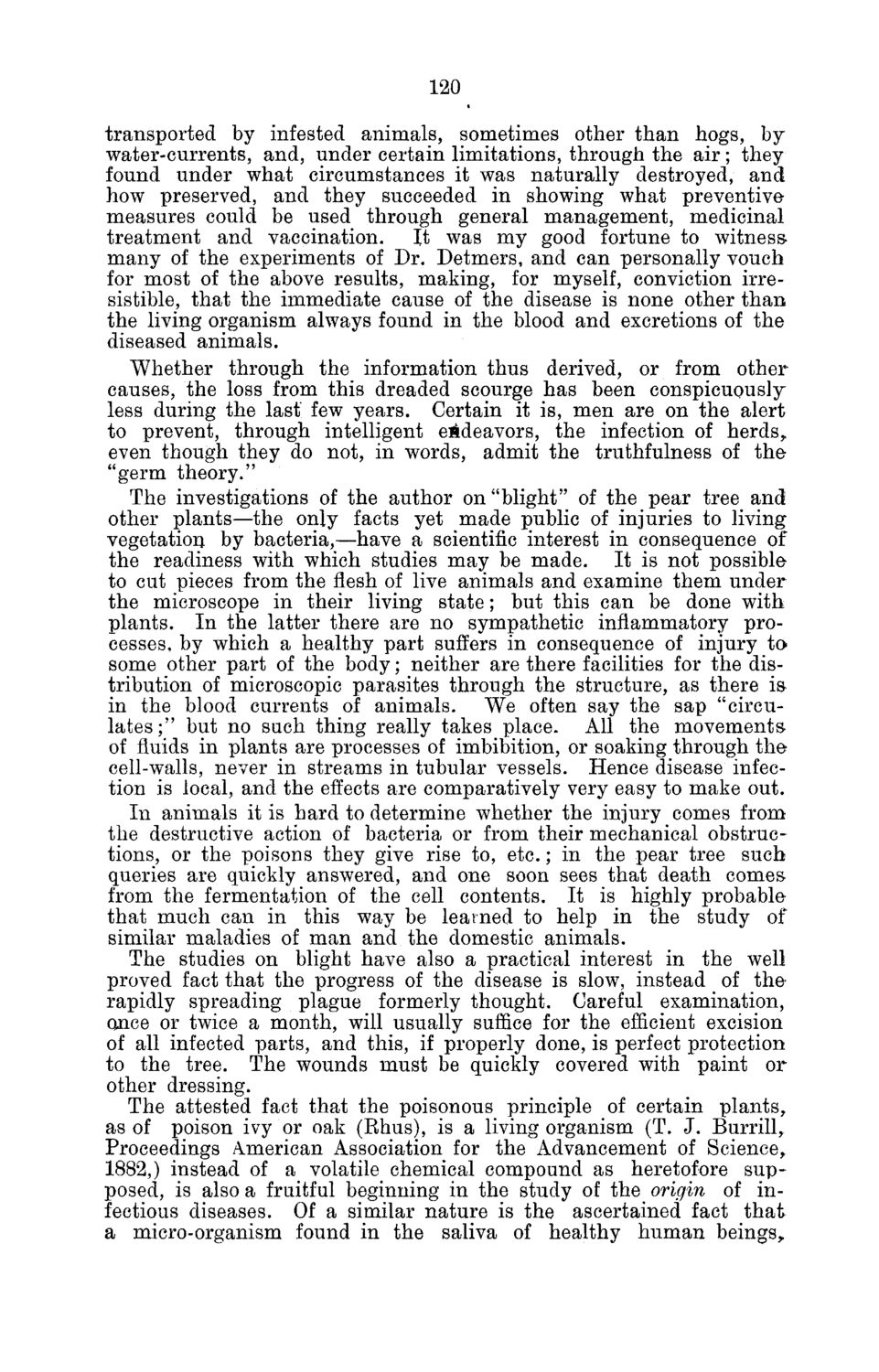| |
| |
Caption: Board of Trustees Minutes - 1882
This is a reduced-resolution page image for fast online browsing.

EXTRACTED TEXT FROM PAGE:
120 transported by infested animals, sometimes other than hogs, by water-currents, and, under certain limitations, through the air; they found under what circumstances it was naturally destroyed, and how preserved, and they succeeded in showing what preventivemeasures could be used through general management, medicinal treatment and vaccination. It was my good fortune to witness many of the experiments of Dr. Detmers, and can personally vouch for most of the above results, making, for myself, conviction irresistible, that the immediate cause of the disease is none other than the living organism always found in the blood and excretions of the diseased animals. Whether through the information thus derived, or from other causes, the loss from this dreaded scourge has been conspicuously less during the last few years. Certain it is, men are on the alert to prevent, through intelligent endeavors, the infection of herds, even though they do not, in words, admit the truthfulness of the"germ theory." The investigations of the author on "blight" of the pear tree and other plants—the only facts yet made public of injuries to living vegetation by bacteria,—have a scientific interest in consequence of the readiness with which studies may be made. It is not possible to cut pieces from the flesh of live animals and examine them under the microscope in their living state; but this can be done with plants. In the latter there are no sympathetic inflammatory processes, by which a healthy part suffers in consequence of injury tosome other part of the body; neither are there facilities for the distribution of microscopic parasites through the structure, as there is in the blood currents of animals. We often say the sap "circulates;" but no such thing really takes place. All the movements of fluids in plants are processes of imbibition, or soaking through thecell-walls, never in streams in tubular vessels. Hence disease infection is local, and the effects are comparatively very easy to make out. In animals it is hard to determine whether the injury comes from the destructive action of bacteria or from their mechanical obstructions, or the poisons they give rise to, etc.; in the pear tree such queries are quickly answered, and one soon sees that death comes from the fermentation of the cell contents. It is highly probable that much can in this way be learned to help in the study of similar maladies of man and the domestic animals. The studies on blight have also a practical interest in the well proved fact that the progress of the disease is slow, instead of the rapidly spreading plague formerly thought. Careful examination, once or twice a month, will usually suffice for the efficient excision of all infected parts, and this, if properly done, is perfect protection to the tree. The wounds must be quickly covered with paint or other dressing. The attested fact that the poisonous principle of certain plants, as of poison ivy or oak (Rhus), is a living organism (T. J. Burrill, Proceedings American xissociation for the Advancement of Science, 1882,) instead of a volatile chemical compound as heretofore supposed, is also a fruitful beginning in the study of the origin of infectious diseases. Of a similar nature is the ascertained fact t h a t a micro-organism found in the saliva of healthy human beings*
| |